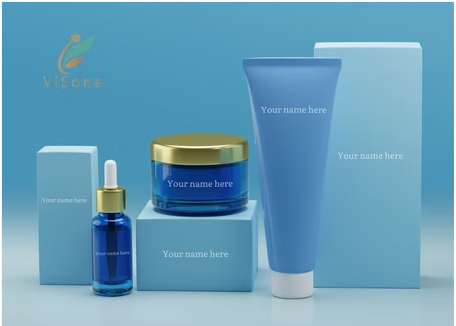Transparency has become a vital hallmark of the cosmetics industry as consumers demand higher standards for safety, sustainability, and ingredient sourcing. Brands are now expected to disclose comprehensive product information, empowering consumers to make informed, ethical choices in a competitive beauty market.
In this evolving landscape, transparency is pivotal for building trust and loyalty among customers, strengthening the foundation for long-term business growth. Leading cosmetics product manufacturers are adapting to these expectations to remain relevant and responsible in the modern marketplace.
The Rising Importance of Transparency
Evolving Consumer Expectations
Today’s beauty shoppers are better informed and more proactive about what they put on their bodies. With rising awareness of ingredient safety, ethical sourcing, and environmental impact, consumers want straightforward, accurate information about every product on the shelf. This shift in behavior has made transparency an essential criterion for selecting products and brands.
- Modern consumers prioritize ingredient transparency and clear labeling when choosing products.
- Socially conscious shoppers seek cruelty-free, vegan, and ethically sourced items.
- Brands that enable customers to check full ingredient lists win greater trust and long-term loyalty.
Regulatory Landscape and Compliance
Recent regulatory reforms, especially in the US and EU, mandate that brands provide detailed ingredient lists, maintain clear labeling, and undergo thorough safety documentation. Regulations like the FDA’s require companies to submit complete documentation and traceability records, directly impacting how cosmetic manufacturers manage production and reporting.
How Transparency Strengthens the Industry
Ingredient Disclosure and Labeling
Ingredient disclosure is now more than just a box to check - it’s a core feature of trustworthy brands. Full ingredient transparency, using standardized nomenclature, allows consumers and regulators to verify product claims and safety easily. This development has become a global norm, with online and brick-and-mortar retailers equally required to comply.
- Ensures consumers understand exactly what they’re putting on their skin.
- Reduces risk of hidden allergens or banned substances in formulations.
- Supports ethical claims, such as organic or fair-trade certifications, with verifiable data.
Traceability and Quality Assurance
Modern cosmetics product manufacturers must guarantee product traceability from raw material to finished goods. Batch tracking, digital record-keeping, and robust documentation ensure products meet both consumer expectations and government regulations. This attention to detail helps identify safety concerns swiftly and reduces risks associated with recalls or market entry issues.
Authentic Brand Reputation
Brands that prioritize transparency build stronger reputations and deepen consumer trust. A clear, auditable trail of how ingredients are sourced and products are formulated can serve as proof of ethical practice, especially amid the growing problem of “greenwashing” in the beauty sector. Manufacturers that embrace honest communication set themselves apart in a crowded market.
- Brands with full disclosure foster more open dialogue with their customer base.
- Transparent communication helps differentiate companies in saturated beauty markets.
- A commitment to transparency leads to stronger business partnerships and brand loyalty.
Consumer Benefits and Market Trends
Informed Purchasing Decisions
Transparent practices empower consumers to make choices in line with their health goals and ethical values. Detailed ingredient lists, clean labeling, and third-party certifications are now highly sought-after factors when buyers compare brands. This shift gives rise to clean beauty and green cosmetic movements, further encouraging brands to maintain stringent transparency standards.
- Transparency fosters consumer education around ingredients and product functions.
- Detailed labeling helps identify personal allergens or sensitivities, improving user safety.
- Access to complete product information enhances customer satisfaction and repeat purchasing.
Protection Against Harmful Ingredients
By demanding full disclosure, consumers and regulatory bodies can more effectively avoid potentially harmful ingredients and ensure that cosmetic manufacturers adhere to the highest safety standards. Self-regulation is bolstered by increased scrutiny and public accountability, reducing the likelihood of toxic or unsafe compounds reaching the marketplace.
Competitive Distinction
Transparency is not just good practice; it’s an operational advantage. Cosmetic manufacturers who champion open ingredient reporting, sustainability claims, and batch traceability gain a powerful edge over competitors still operating with outdated secrecy. This trend is shaping industry best practices and guiding the next wave of innovation within beauty product manufacturing.
Challenges in Achieving Full Transparency
Supply Chain Complexity
The global supply networks for raw materials and ingredients are vast and intricate. Achieving absolute transparency requires close partnerships, frequent audits, and digital traceability systems to ensure every part of the supply chain upholds the required ethical and safety standards.
Conclusion
As transparency becomes the new standard in the cosmetics industry, brands that take proactive steps to ensure openness at every production stage will gain the trust of both regulators and consumers. This shift signals a new era where credible, ethical business practices align closely with industry reputation and sustainable growth.
Forward-thinking cosmetic manufacturers, such as ViSona LLC, represent a wider movement in the sector, setting the benchmark for what responsible cosmetics product manufacturers can achieve by making transparency their guiding principle. Today’s evolving standards demand that every cosmetic manufacturer help redefine industry norms, ensuring the future of beauty is both ethical and open for all.
